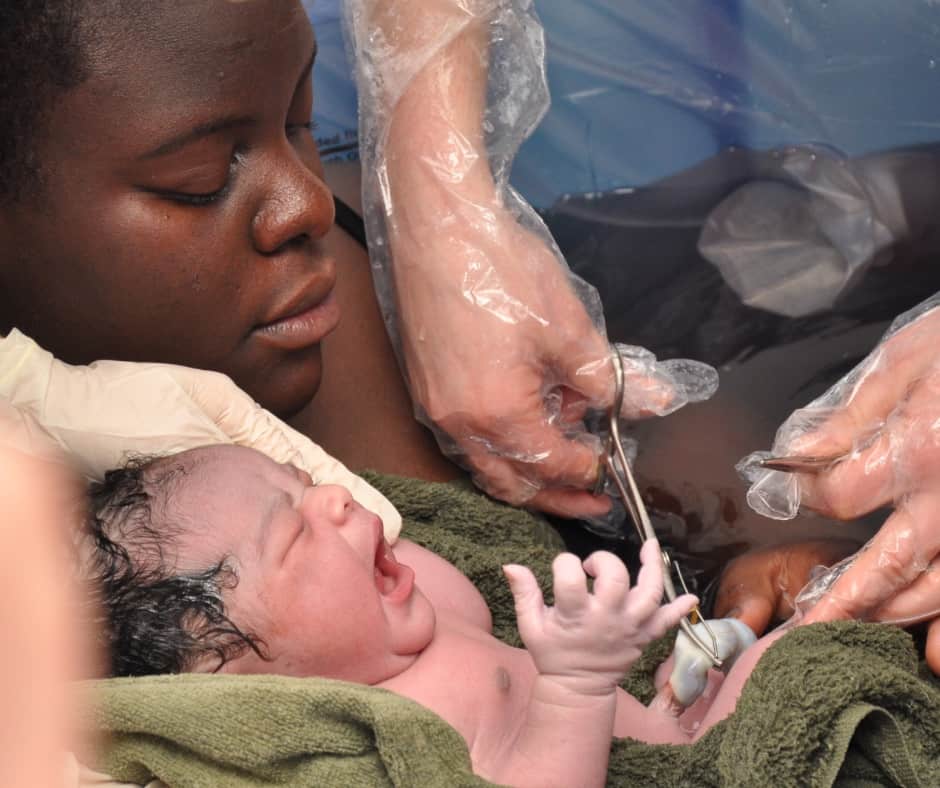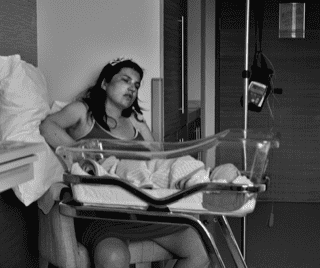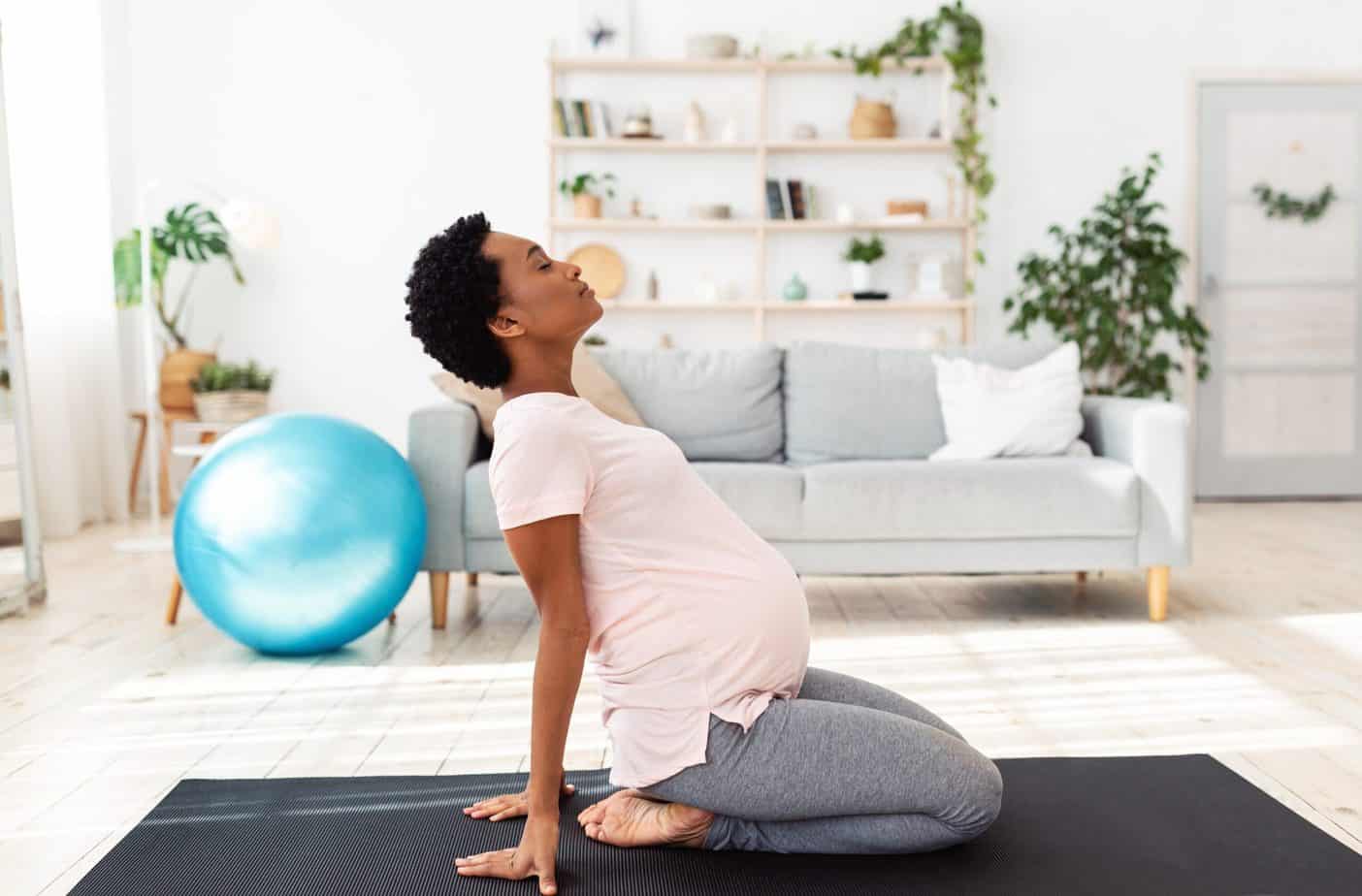Karen Ellis
Postnatal Rehabilitation Coach, Postnatal Exercise Instructor and former Midwife
Website – www.karenpostrehab.co.uk
@karenpostrehab
Summary
After having a baby, we want to feel strong in our body again. We want a pelvic floor that we feel confident will manage the trampoline with our toddler. A stomach, core and back that recovers from having a baby and that feels strong again so we can lift our growing children with ease and live life having awesome adventures.
In our postnatal care, we are not given the education or tools to do this. If we are lucky we will get a leaflet and a reminder to do our pelvic floor squeezes. Physical postnatal recovery is so much more than that. Let me take you through the 8 steps of the roadmap to a strong postnatal body.
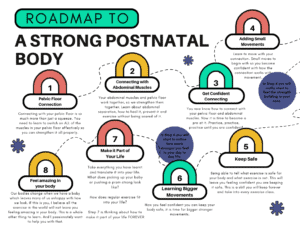
Step One – Pelvic Floor Connection
Step one is the pelvic floor squeezes we are told to do daily. This is the perfect place to start. It isn’t just a quick squeeze though. There is more to it than that. If no one has talked you through a pelvic floor squeeze start with the related article linked below to learn how to do one properly before you move on to step two.
Step Two – Connecting with Abdominal Muscles
When you have a baby the pair of muscles running down the front of your stomach (Rectus Abdominis/RA’s) separate to allow space for your baby to grow (aka Diastasis Recti). We want to ensure that those muscles are supported postnatally so they can heal. To support the healing of those muscles we need to make sure the muscles around your lower tummy (Transverse Abdominis/TA’s) switch on. We can then add this to our pelvic floor squeeze. Adding this to our pelvic floor squeeze not only means you heal any Diastasis Recti but you have also recruited more muscles to support your pelvic floor. Find a video HERE that will walk you through how to connect with these muscles.
Step Three – Get Confident Connecting
In step three you become super confident in switching your connection on. Becoming confident in this switch-on is just as much about your brain learning where those muscles are, as it is about strengthening. We aim to be able to use this connection in our exercise and our day-to-day life. But in these early days, it is all about learning how it feels to switch them on. You could use my ‘pelvic floor squeeze along’ on my socials to help you practice these daily until you become confident with them. Search #pelvicfloorsqueezealongwithkaren on Facebook or Instagram to find them.
Step Four – Adding Small Movements
So now you are confident switching your core on, it is time to start working out how to switch your core on with movement. These muscles are weak just now and need some time with small movements to build up their strength. Also, this is new to you, so you need to spend some time getting to know how it feels to have your core switched on as you do movements.
Here is a demonstration of a great move to start practising:
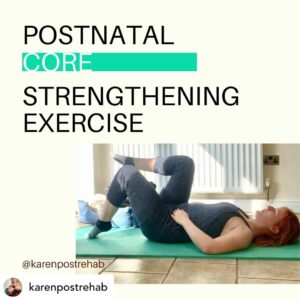
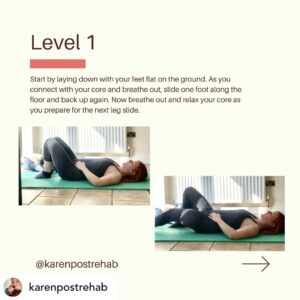
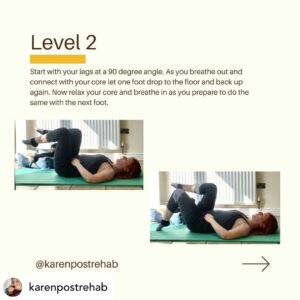
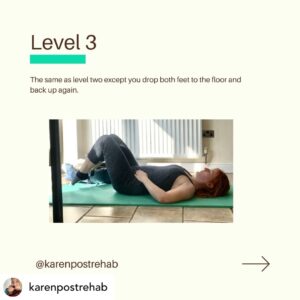
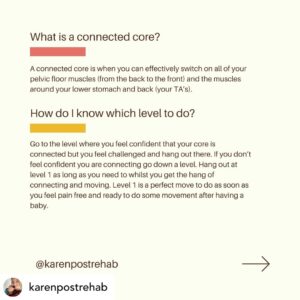
Step Five – Keep Safe
This step is all about learning when your core is switched on and when it is switched off. It is about taking the time to get to know your body and what it is doing. In a world where we are taught to do more and go harder, I want you to go slower, be patient, listen to your body and keep safe. Learn how it feels to have your core switched on as you move up the levels in exercise – this keeps you safe, Learn how it feels when your core switches off if you go up the levels too fast and slow down to a place you are confident at.
Step Six – Learn Bigger Moves
Now you feel confident knowing when your core is switched on and when it is switched off, you can start doing bigger moves. I highly recommend finding a postnatal exercise class, where the instructor cues when to breathe and when to connect as you do bigger moves. It will be tricky at first, but if you are patient with yourself and take the time to learn this skill, it will be a skill that you can take into any form of exercise for the rest of your life. Feel free to use this free playback of a class to get you started.
https://www.karenpostrehab.co.uk/free-postnatal-exercise-class-trial-playback
Step Seven – Make it Part of Your Life
Making it part of your life is recognising when you are doing movements in your day-to-day life that put a strain on your core. Then take everything you have learnt in steps 1 – 6 to make that move strong by turning on your core as you move.
Step Eight – Feel Amazing in Your Body
This is a step I became passionate about after my 6-year-old daughter told me she hated her body. This is about recognising the pressure that societal messages put on us to look a certain way, and calling bull to them so that we can concentrate on what our body does and how awesome we are as a person because that is sooo much more empowering. If you would like to learn more about this, listen to me talk about this in the resources below.
If you learn better by being taught and visuals, sign up for Karen’s Bi-monthly free Pelvic Floor Workshop. https://www.karenpostrehab.co.uk/free-strong-pelvic-floor-workshop
Or if you want to jump right into being hand-held through your postnatal recovery, have access to an expert to ask questions along the way, postnatal exercise classes and everything you need to have dry knickers, a strong core and a body you have confidence in so you can enjoy active adventures with your littles, join Karen’s Postnatal Exercise membership. https://www.karenpostrehab.co.uk/full-online-membership








